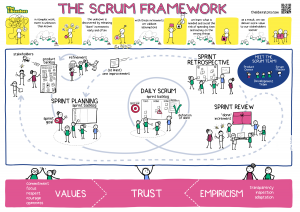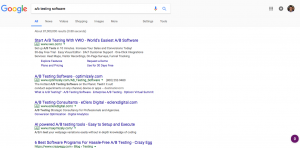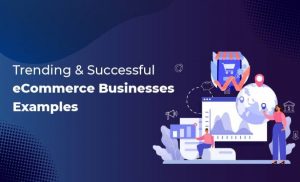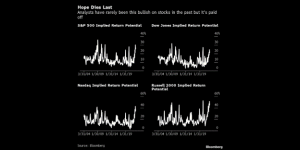Do you do remarketing? Or send out newsletters?
Remarketing has become a very popular tool for promoting online stores after customers leave your site.
In this article we’ll look at how you can build engagement and boost sales with “onsite retargeting”, the latest technology which allows you to remarket and engage with customers before they leave your site.
The main goal of ecommerce marketing is to reach potential buyers, build their awareness and engagement, and ultimately encourage them to make a purchase and come back again.
With many online stores competing for the same buyers, using the latest tools to connect with your target audience is vital to your success. Remarketing, also known as retargeting, has quickly become a popular and effective tool for building engagement and repeat business.
With remarketing you can:
- reach your warm and hot prospects, people who’ve already shown a certain level of interest by visiting your site or signing up for your newsletter
- you can provide super-relevant, customized offers for these prospects
Traditional Remarketing Is Happening Our of Your Site
Both Facebook Ads and Google AdWords, today’s most popular pay-per-click platforms, provide high-tech remarketing solutions with advanced targeting options. They also allow you to show specific ads to past visitors who have visited a specific page on your website.
When visitors leave your website without subscribing or buying anything, remarketing helps you reconnect with them by showing relevant ads when they are browsing other sites on the web, such as when they search on Google, or when they use Facebook.
You can consider traditional remarketing as “offsite remarketing”, because the reengagement occurs outside of your website.
Here’s a great example from Digital Marketer which speaks directly to people who have already visited their website:

It’s easy to see why remarketing has grown in popularity. It can prove highly effective, and you can be sure you’re spending your resources on people who’ve already shown some interest.
However, you can still end up wasting resources. Let’s not forget that only 3% of visitors buy in an average online store.
It’s a sad truth, but it’s a stark reality that ecommerce stores have to deal with every day, to put it another way: 97 out of 100 people leave the average site without buying.
You can send as many visitors as you want back to your site, but without a new strategy to convert them into customers, you’ll still end up back at square one. This is where “onsite retargeting” comes into play.
Onsite Retargeting Can Catch Customers on the Site
Onsite retargeting could also be called “onsite remarketing”, because it works like remarketing, the only difference, and it’s an important one, onsite retargeting allows you to reengage your visitors while they are still on your site.
The technology works by monitoring the behavior of your visitors, and when it detects that they’re ready for some additional message, it will be displayed to them – usually in a popup overlay.
You can use onsite retargeting to convince visitors who are trying to leave your website to sign up for an email list, or convince them to complete their purchase by providing them a secondary message or additional incentive.
In most cases, this message is shown right before visitors exit your site, and so this solution is also known as exit-intent technology – but onsite retargeting is much more than that.
In addition to monitoring when a visitor is about to leave your site, you can also monitor their engagement, and act on it. For example, your onsite retargeting message can be displayed after X seconds of inactivity, after scrolling down at least X percent, or even when a visitor clicks on a specific part of your page.
Onsite retargeting uses popups, which some people are hesitant to use, because they don’t want to annoy or disturb their customers. However, when used appropriately, onsite retargeting provides relevant offers and information for your visitors and is a highly effectively tool for increasing your signups, and boosting your sales and revenue.
Some of the most well-known online marketing experts are using onsite retargeting to boost engagement on their site – including Neil Patel at QuickSprout.com:

Or, another example from Digital Marketer, this time on their blog:

Even WordStream, the online advertising expert, uses onsite retargeting with exit-intent popups, because they’ve been proven to work:

Okay, let’s move on from these examples and see how you can leverage the power of onsite retargeting on your site.
1. Engage Early-Stage Visitors
Most of your website visitors aren’t planning to buy immediately when they arrive at your site. Don’t take it personally. It’s not because they don’t want to purchase from you, it’s more likely they’re not quite ready to buy: they don’t know exactly what they are looking for, what would be the best solution to their problem, or they simply need more information to make a decision.
You can consider these visitors as “early-stage” visitors who are in the beginning of the buying process. To guide them to making a purchase, you need to increase their engagement and awareness of your products, services and offers.
You can boost engagement and increase your chances of success with early-stage visitors by:
- directing them to an important landing page with information about a new solution or product line that addresses their needs
- promoting your best-converting content – your best-selling products, most successful articles, and useful resources
- helping visitors find the right information that’s relevant to them
Here’s an example from iSpionage.com that uses a popup overlay to redirect cold traffic, arriving at their blog, towards the homepage of their main site, iSpionage:

As outlined in this case study, iSpionage was able to increase their blog referral traffic by 58% in only one month using onsite retargeting.
The takeaway: Use onsite retargeting to appeal to early-stage visitors by educating them about your solutions, creating awareness of your offers, and driving traffic to your best-converting content.
2. Capture Email Addresses of Middle-Stage Visitors
In addition to traditional remarketing, email marketing is an other powerful way to communicate with past visitors outside of your website. That’s one reason why email marketing is still one of the most effective digital marketing tools, especially for loyalty programs, it’s a type of remarketing.
Email open rates continue to perform strongly. What’s more, today’s advanced strategies, like personalization, list segmentation, lead scoring, and more, enable you to send persuasive, highly-relevant, customized e-mail messages to encourage your subscribers to buy, and buy again.
That’s all well and good, but how do you build a healthy email list of subscribers who are interested in your products or services? Well, here’s another place where onsite retargeting comes into play.
Onsite retargeting is especially helpful in converting “middle-stage” visitors into signups. Middle-stage visitors are in the consideration stage of the buying process, that is, they’re interested in your offers, but still not ready to buy.
The benefit of onsite retargeting is that not only can it be used to increase the number of subscribers on your site, but it also helps you build a healthy list of high-quality leads that can be converted into valuable customers later on.
You can use onsite retargeting to build a relevant, healthy mail list by:
- simply promoting your newsletter subscription
- offering a valuable lead magnet in exchange for subscribing – an ebook, podcast, coupon, discount, product sample, sweepstakes, free shipping, or Skype consultation
- showcasing email-only deals – special offers and rewards only available to subscribers
The following example from BOOM! By Cindy Joseph, the pro-age cosmetics online store, shows how to use an ebook to convert visitors into subscribers:

You can learn how BOOM! used onsite retargeting to boost their ecommerce revenue by $ 148,297 in this case study.
The takeaway: Use on-site retargeting to convert “middle-stage” visitors into subscribers, and build a healthy list of people you can convert into buyers later on through email. Offer something valuable in return for subscription to boost signup rates – it doesn’t have to cost a lot, sometimes a well-written ebook with useful information can be just as effective, and positions you as an expert in the eyes of your audience too.
3. Turn Window-shoppers To Customers
When your visitors have reached the “decision” stage of the buying process – what are considered “late-stage visitors” – lead nurturing and sales promotion should be the primary goal of your onsite retargeting campaign.
These late-stage visitors are usually ready to buy: many are returning visitors, they’re viewing product pages, spending more time in your online store, and some have even added a few items to their cart. They only need the right encouragement at the right time to make a purchase.
You can turn your late-stage visitors into immediate sales by
- providing an incentive that makes them buy – a discount, coupon, free shipping, or limited-time offer
- reminding your hot leads of the incentive by using a nanobar at the top or bottom of their browser window
- recovering lost carts by targeting people abandoning their carts with a specific message
- offering to save the cart contents so visitors can finish their purchase later on
BootCuffsSock.com uses a countdown popup to recover lost carts. The following special offer can only be seen by people who are abandoning their carts:

You can also apply many of the same techniques from traditional remarketing to onsite retargeting. BootCuffsSock.com took their campaign a step further and A/B tested their incentive, creating another offer of the same value but using percentage instead of a dollar amount:

They found percentage discount was a more powerful incentive, outperforming the dollar amount coupon by almost 21%.
The takeaway: Use on-site retargeting to convince your late-stage visitors to make a purchase. Test your campaigns to learn what the best incentive is for converting leads into customers. Another way to look at this is: discover what obstacles are preventing them from making a purchase, and offer a solution in your onsite retargeting campaign.
4. Build Trust and Gather Customer Feedback
In addition to building awareness, generating leads, and direct sales promotion, there are many ways to improve your business and chances of making a sale with onsite retargeting.
Try these other techniques to increase engagement and boost sales on your site:
- ask for feedback from your prospects or existing customers in order to improve the user experience of your site
- showcase your warranty and your return policy to build trust and increase confidence in your buyers
- provide customer support options – an immediate phone call or a live chat can be life-saver
Here’s a good example from Samsung on how you can request feedback using a well-timed popup:

The takeaway: Look beyond your primary objective of making a sale and think about other ways to improve your business and boost engagement. Do you want to improve your website? Do you want to reduce uncertainty for your buyers or remove their obstacles to making a purchase? Don’t waste your time, you can put your strategy into place right away with an onsite retargeting campaign.
Conclusion
Onsite retargeting is a powerful tool that allows you to use many of the same techniques as traditional remarketing, and more advanced methods of increasing engagement, right on your site.
By understanding where your visitors are in the buying process, you can present relevant messages that boost your conversions and help you accomplish “microconversions”, all the small steps that lead from awareness of your product to making a purchase decision.
Whether your goal is lead generation, driving more traffic, or boosting immediate sales, you can use onsite retargeting to take your business to the next level.
Business & Finance Articles on Business 2 Community(76)









